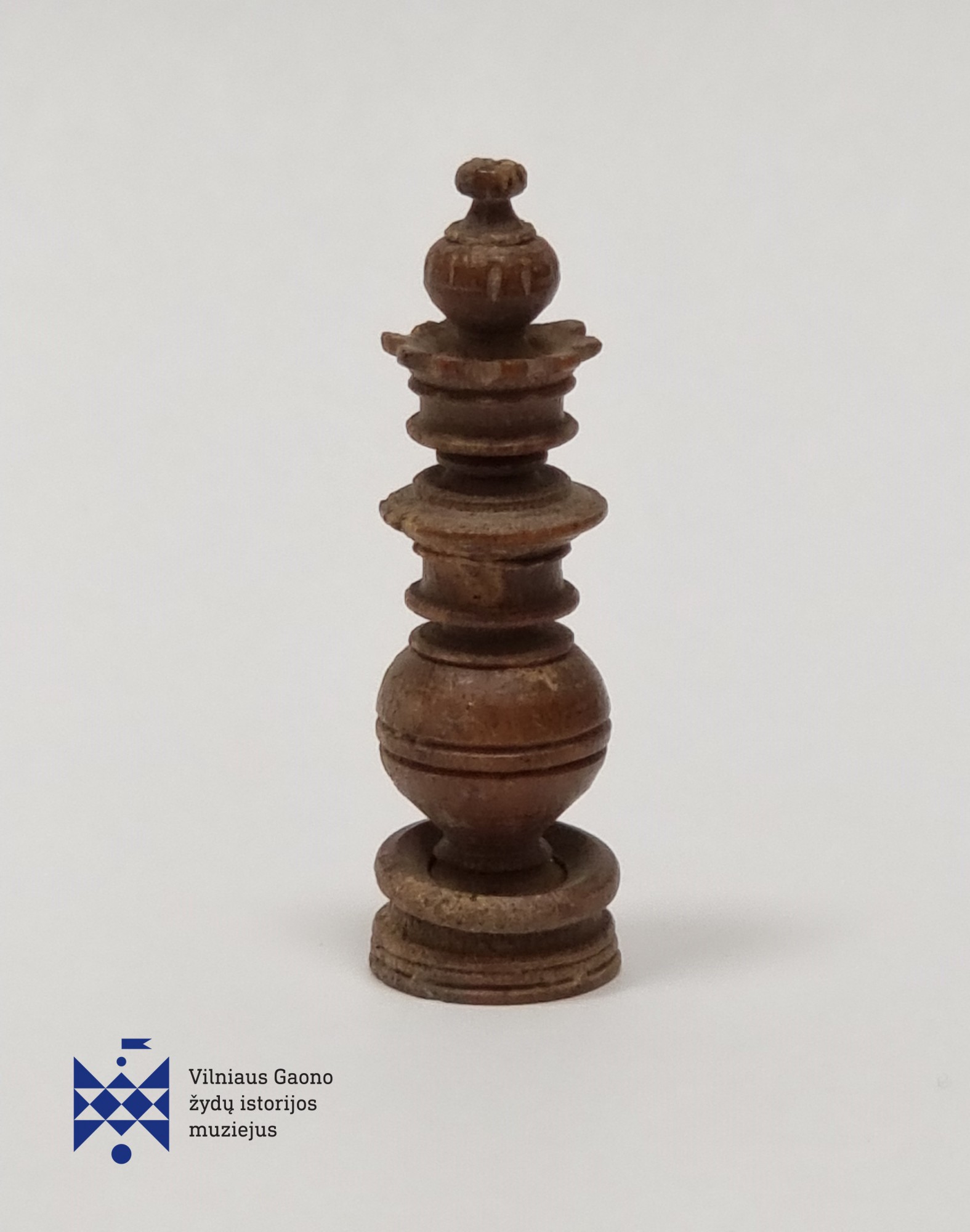Exhibit of the month |
← |
Published: 2023-05-02

Chess Piece
Ca. 17th–18th c.c. Acc. No. VŽM 9111/2047
Chess is one of the oldest board games. It derives from the chaturanga game that originated in the 5th–6th centuries in India. The first chess pieces were realistic in style and depicted humans and animals: radja (king), farzi (king's adviser—queen) and padati (pawn), chasti (elephant—bishop), asva (horse—knight), ratcha and nauka (chariot and ship—rook).
In Europe, chess became popular in the 11th–13th centuries. In the beginning, both oriental and realistic style chess were played. Starting in the 15th century, chess pieces of an entirely new form spread throughout Europe. They were mostly shaped with the help of a grind, had a massive round base and a cylinder-shaped upper part, which was mostly profiled. In the 13th century, the first writings on the rules of the game of chess appeared.
It is believed that chess could have arrived to Europe through the southern rout and via the Dnieper and Daugava rivers. The first to introduce Europeans to chess were Arabs following the conquest of Spain and Sicily in the 8th century. The second rout for the chess to reach Europe in the 9th—11th centuries was the one connecting Scandinavia with Mesopotamia and Persia.
In Lithuania, chess pieces are mainly found in the cultural layers of archaeological digs of casles and cities.
The Great Synagogue of Vilna was built at the end of the 16th century–the beginning of the 17th century and was heavily damaged during World War II. From 1955 to 195, by decision of the Soviet authorities, the remains of the buildings of the Great Synagogue and the shulhoyf were demolished. Archaeological research was conducted on the territory of the Great Synagogue of Vilna in 2011 and 2016–2021. During the 2018 research season, a wooden (?) chess piece – queen – was discovered. Together with it, fragments of ceramics, glazed tiles and decorative finish dating back to the same period were uncovered.
Prepared by Asta Vasiliauskaitė, curator of archaeological holdings
Sources:
Blaževičius P. ‘Old Lithuanian Chess’ in: Lithuanian archaeology, vol. 34, Vilnius, 2009, p. 59–104.
Murray H. J. R. A history of chess, Oxford, 1913.
© Photograph of the museum valuable courtesy of A. Vasiliauskaitė
© From the collections of VGMJH
| ↑ | ← |
